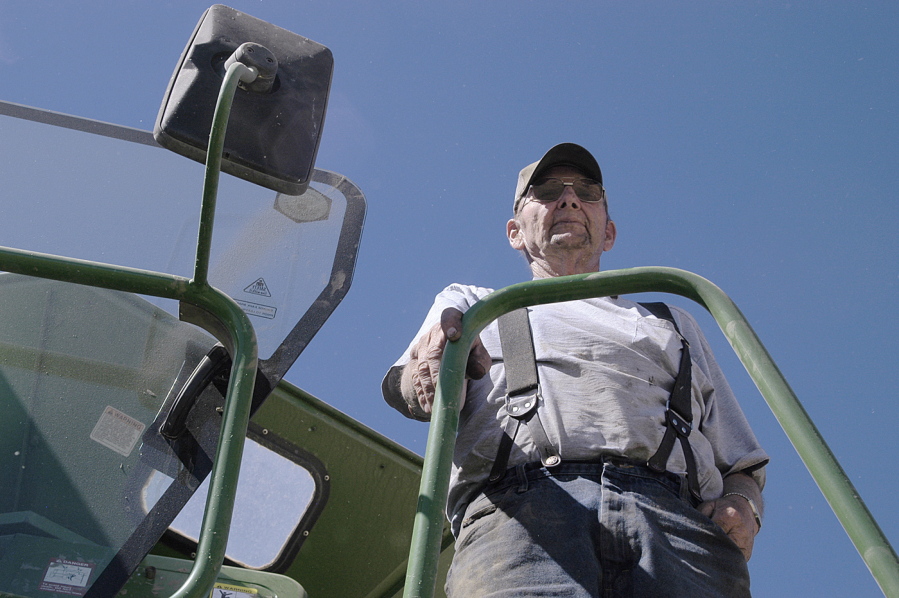CONDON, Ore. — It’s a limited pallet this time of year in the Columbia Plateau counties. Blue sky above brown fallow, with combines of John Deere green or Case IH red moving in slow, shrinking circuits around golden wheat fields.
It’s an empty landscape, most ways you look. Few buildings and no traffic. And in that emptiness, you can lose track of the broader world. The wheat kernels tumbling into the hopper on Chuck Greenfield’s combine are the reminder of the connection. From Gilliam County, Ore., with fewer than 2,000 people, it will go to flour mills in Japan, South Korea, Taiwan and the Philippines.
“Feed the world,” Greenfield said.
It is a diminished group of farmers who can make a living doing that. Greenfield’s employer, Marc Pryor, said the county had about 150 wheat farmers in the 1970s. Now he estimates the number is in the teens. It’s a classic example of the economy of scale: Like most crops, wheat’s narrow profit margin makes it critical to spread input, equipment and labor costs over more acreage, and it forced farmers to get bigger or get out.
In 1950, Oregon had 34,000 farms of one to 49 acres. Now it’s down to 21,800 in that size category. The state lost 8 percent of its farmers between the 2007 Census of Agriculture to the next one in 2012.



